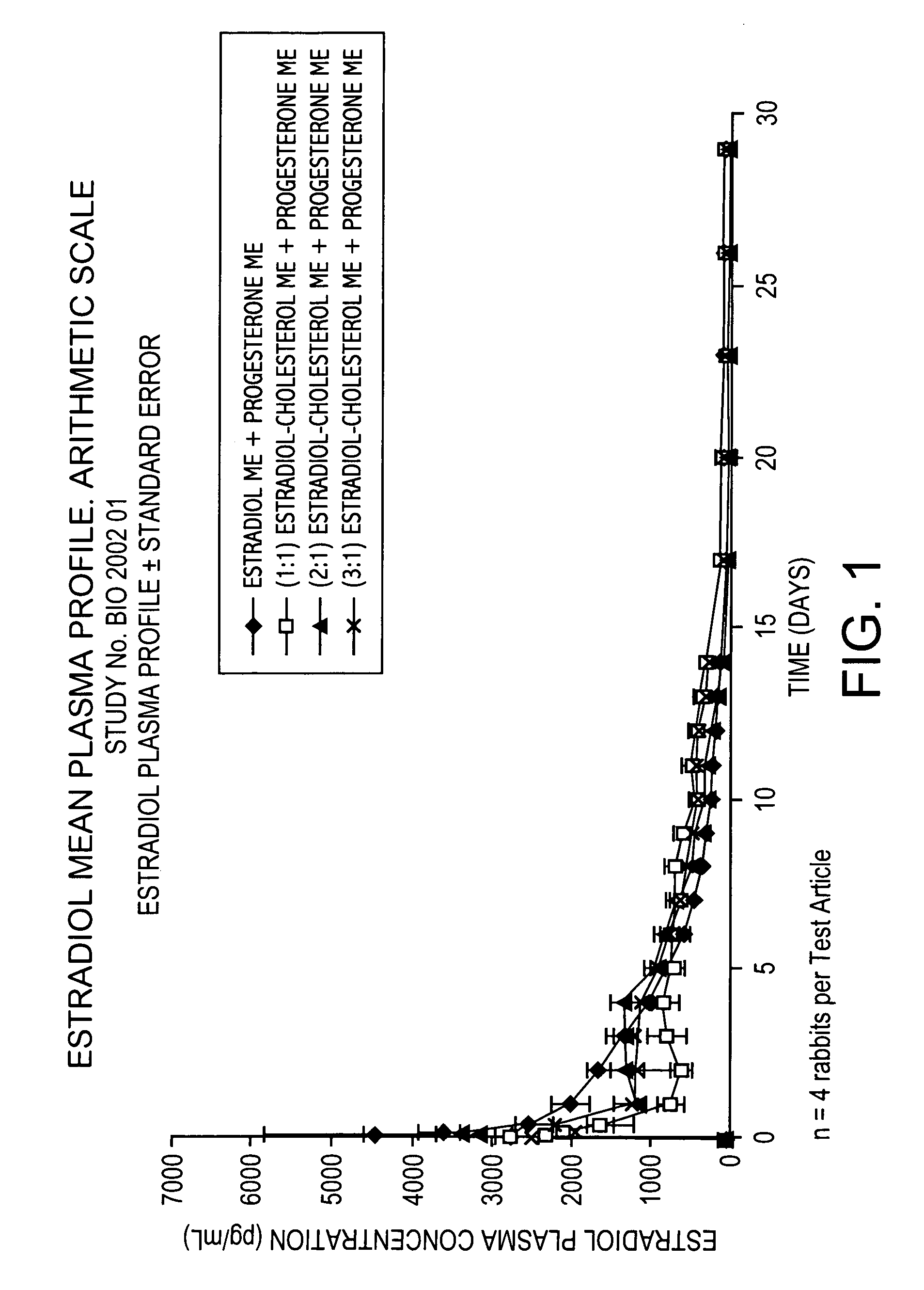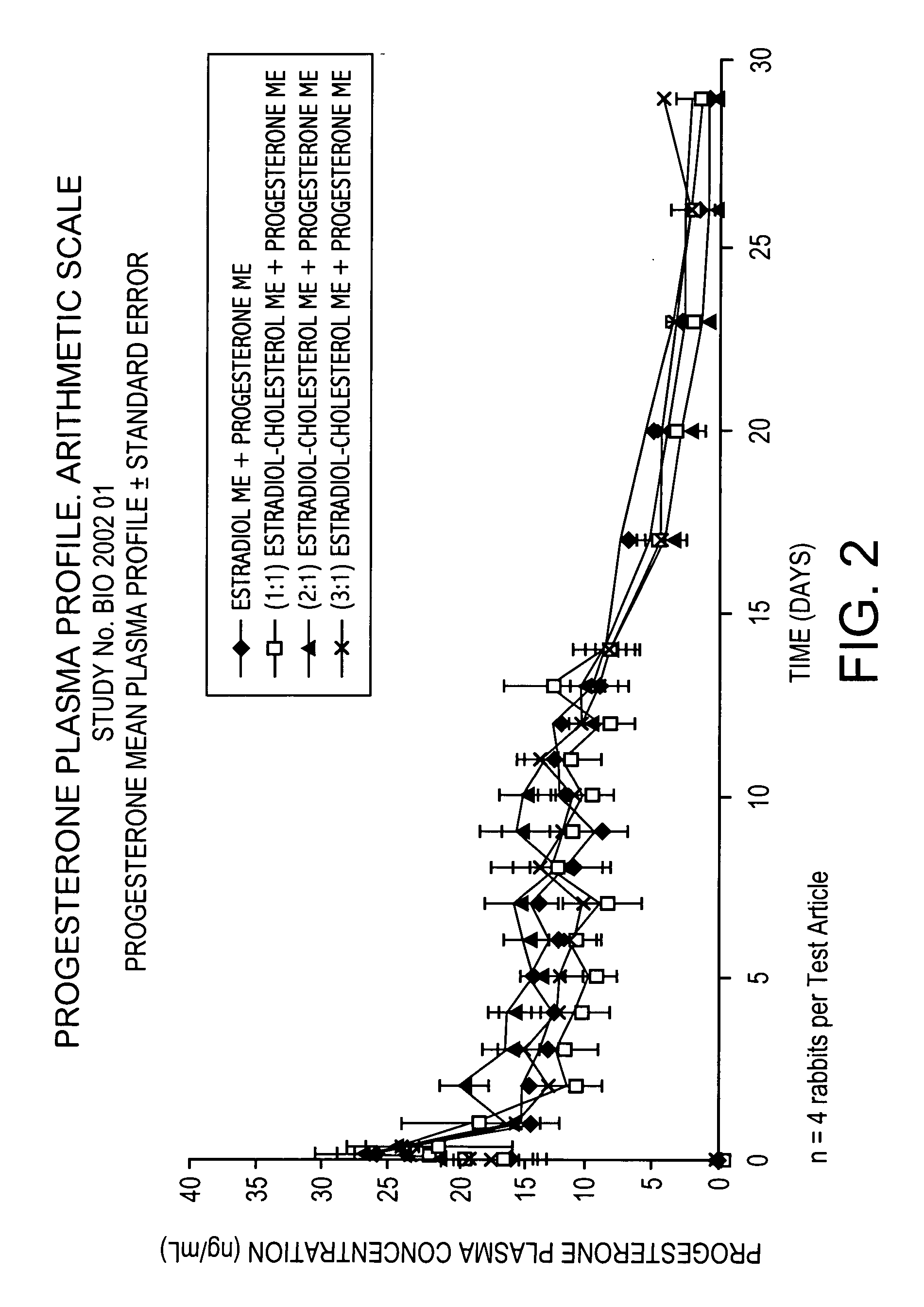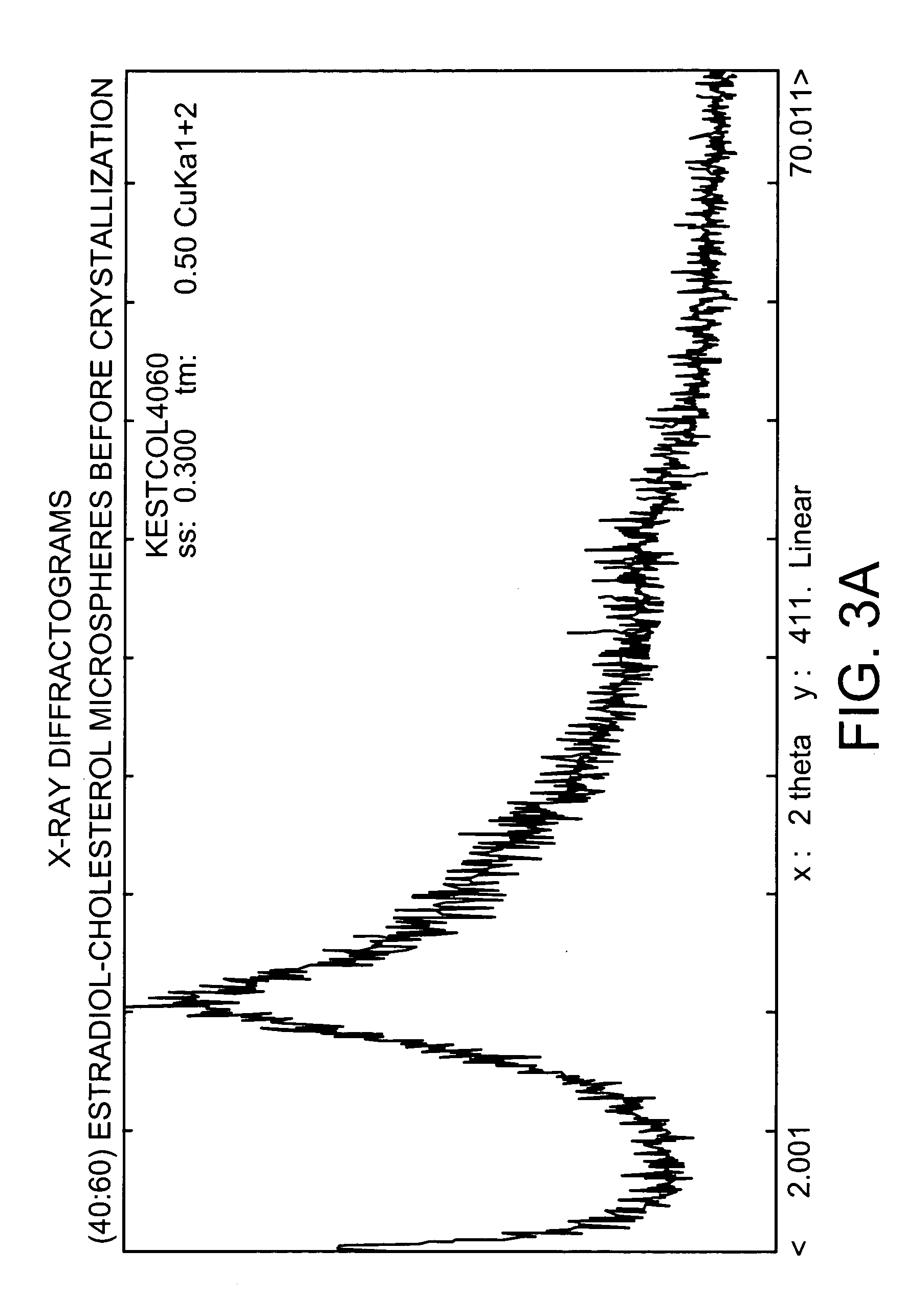Pharmaceutical formulation for contraception and hormone-replacement therapy
a technology of hormone replacement therapy and pharmaceutical formulations, applied in the field of pharmaceutical formulations, can solve the problems that synthetic hormones do not provide such hormone replacement benefits, and achieve the effect of avoiding undesirable hormone imbalances and minimizing or eliminating undesirable side effects
- Summary
- Abstract
- Description
- Claims
- Application Information
AI Technical Summary
Benefits of technology
Problems solved by technology
Method used
Image
Examples
example 1
Pharmacokinetic Study in Rabbits to Assess the Bioavailabilty of Different Combinations of Progesterone Microspheres & Estradiol Microspheres and Microspheres at Different Ratios of Estradiol to Cholesterol
This study is aimed at assessing the pharmacokinetic profile of test articles containing Progesterone (P) and 17-β-Estradiol (E). A prospective and comparative study was conducted in New Zealand male rabbits. Test articles consisted of aqueous suspensions using the aqueous vehicle described above of microspheres of progesterone+microspheres of estradiol (E) or estradiol cholesterol (EC), manufactured by following the process described in U.S. Pat. No. 5,360,616 and crystallized according to U.S. Pat. No. 6,528,094 B1. Test articles evaluated are the following:
Test ArticleCompositionAP Microspheres (ME) + E MEBP ME + (1:1) Estradiol Cholesterol MECP ME + (2:1) Estradiol Cholesterol MEDP ME + (3:1) Estradiol Cholesterol ME
The aqueous suspensions were administered in the form of...
example 3
Modified Crystallization Process for EC ME Presenting 20% Dissolution Over 24 Hours (“Crystallization Process B”)
Estradiol-cholesterol (1:1) microspheres were fabricated as in Example 2, above. The microspheres, having a high amorphous content, were exposed to vapors of acetone and water (95 mole % acetone: 5 mole % water) for three consecutive 24 hour stages at 30° C. Between stages, hermetic containers are opened and the contents dried with air, residual solvent is removed and then the estradiol microspheres are submitted to the next vapor-exposure stage.
The particles were then heated (desiccated) at 45° C. for 42 hours under vacuum (about 12.2 in. Hg).
The resulting particles produced an average EDR of about 20%. See FIG. 5.
example 4
Crystallization Process for Ultralow Dissolution of Estradiol-Cholesterol Microspheres (“Crystallization Process C”)
Estradiol-cholesterol microspheres were fabricated according to the process of Example 2. The particles were stored under low relative humidity for 24 hours. The particles were then exposed to vapors of acetone and water (72 mole % acetone / 28 mole % water) for 72 hours at 60° C. The particles were then heated (for desiccation) at 45° C. for 42 hours.
The resulting particles had an average of about 5% dissolution of estradiol over 24 hours in an aqueous solution of 0.3% polyoxyethylenesorbitan monooleate (Tween 80®) at standard temperature and pressure.
FIG. 19 illustrates the dissolution profile of the particles of this Example compared to those resulting from the methods of Examples 2 and 3.
FIG. 20 shows the DSC profile of the particles resulting from this Example.
FIGS. 21 and 22 are X-ray diffractograms of the particles resulting from Example 4.
PUM
| Property | Measurement | Unit |
|---|---|---|
| Temperature | aaaaa | aaaaa |
| Temperature | aaaaa | aaaaa |
| Temperature | aaaaa | aaaaa |
Abstract
Description
Claims
Application Information
 Login to View More
Login to View More - R&D
- Intellectual Property
- Life Sciences
- Materials
- Tech Scout
- Unparalleled Data Quality
- Higher Quality Content
- 60% Fewer Hallucinations
Browse by: Latest US Patents, China's latest patents, Technical Efficacy Thesaurus, Application Domain, Technology Topic, Popular Technical Reports.
© 2025 PatSnap. All rights reserved.Legal|Privacy policy|Modern Slavery Act Transparency Statement|Sitemap|About US| Contact US: help@patsnap.com



